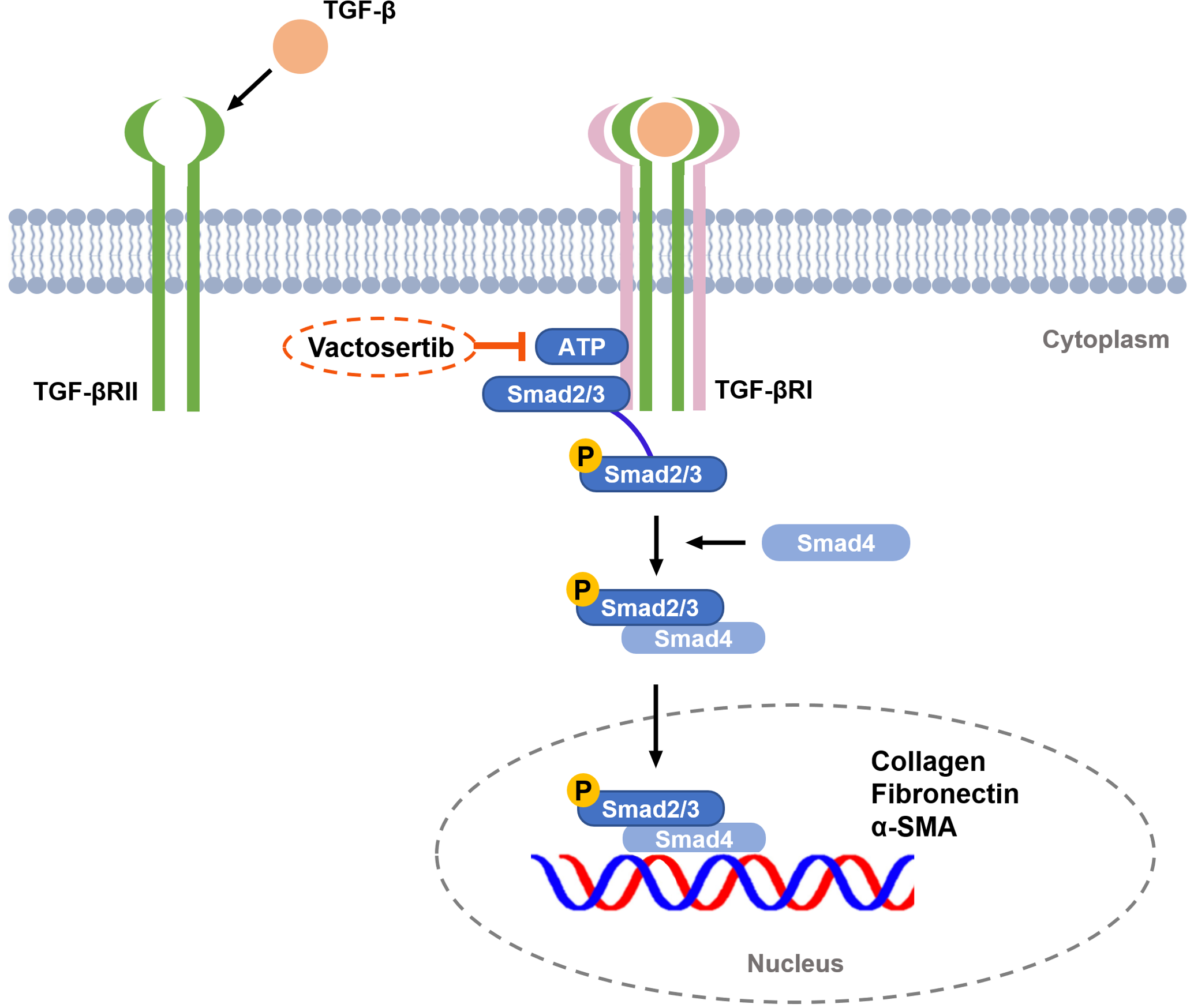Vactosertib is a highly potent, selective, and orally bioavailable small-molecule TGF-β type I
receptor kinase (ALK5) inhibitor
Vactosertib, which was initially synthesized in Professor Dae-Kee Kim's laboratory at Ewha Womans University, is a small-molecule inhibitor of TGF-β type I receptor kinase (TGF-βRI) that has demonstrated strong potential as an anti-fibrotic agent in preclinical studies using animal models.
Currently, Vactosertib is undergoing clinical trials in the United States for various types of cancer, and thus far, no significant adverse effects have been reported.
In fact, Vactosertib is recognized as one of the most promising drugs as first-in-class in development.
Its ability to specifically target TGF-βRI and block downstream signaling pathways involved in fibrosis make it a potentially valuable therapeutic option for fibrotic diseases.
It's worth noting that Vactosertib has shown promise not only as a potential treatment for cancer but also as an anti-fibrotic agent.
As it undergoes further clinical trials, the safety and efficacy of Vactosertib will continue to be evaluated, and its potential applications in the treatment of various fibrotic diseases will be better understood.
